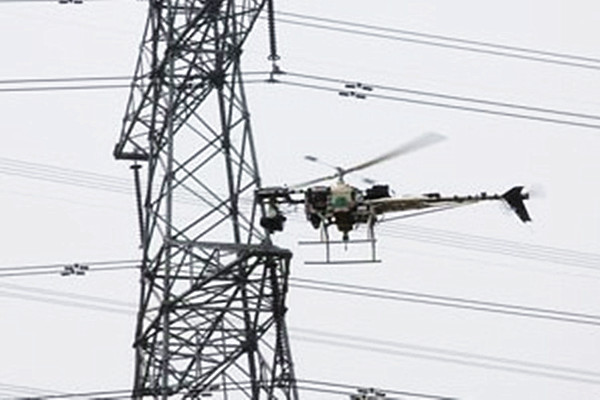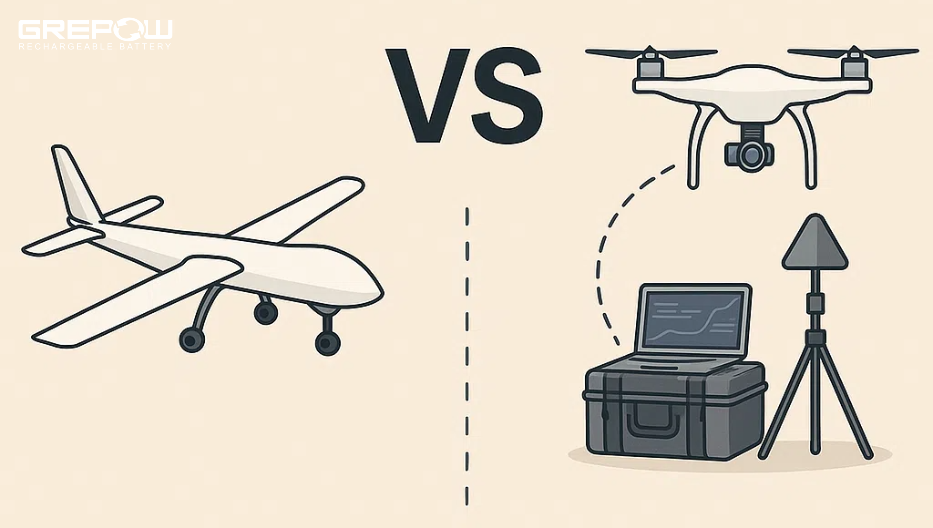Expert guidance-Precautions for the storage of industrial drone battery
Expert guidance-Precautions for the storage of industrial drone battery
With the development of science and technology, riskier occupations are gradually replaced by equipment. Industrial drones focus on solving industry problems and improving efficiency. The agricultural plant protection, power line patrols, security inspections, forest fire prevention, aerial surveying, police and fire protection are playing an important role. This also reduces the probability of accidents in various high-risk jobs. Industrial drone battery have flourished with the advent of lithium batteries. What kind of environment do spare drone batteries need to be stored in? What are its corresponding warehouse management requirements? In this regard, experts give the industrial drone battery storage precautions.
Strict requirements for the temperature of the battery storage
At present, lithium polymer batteries are commonly used in industrial drone batteries. The raw material for lithium polymer batteries is lithium metal. The chemical properties of lithium metal are very lively, making the processing, preservation and use of lithium metal very high environmental requirements.

Lithium polymer batteries are high and low-temperature adaptable. It can be used in an environment of -20 Celsius -60 degrees Celsius, and can be used in a process-processed environment of -45 degrees Celsius.However, this does not mean that its storage temperature is the same. Storage temperatures are best kept at 18 degrees Celsius to 25 degrees Celsius. The maximum must not exceed 30 degrees Celsius. The chemical properties of batteries at this temperature are the most stable. The battery's internal storage capacity is stored within a week and the internal power consumption is within 1%. When it is stored for three months, its internal power consumption is within 3%。However, if the storage temperature is too high, the internal electrolyte inside the battery is more capable of penetrating the diaphragm. In the case, the more power you consume. If the storage temperature is too low, the battery needs to heat up when it is removed and used. Rapid heating over a short period of time can speed up the loss of battery power.
Set up a good exhaust system
Drone batteries are in production, and dust control comes first. This is determined by the materials used by the battery and their safety requirements. Lipo batteries seek higher energy density and power. At the time of design, the thickness of the diaphragm paper used will generally be reduced to the lowest possible level. In Grepow batteries, the diaphragm used is 20 μm thick. This is equivalent to 1/3 of the thickness of the hair diameter, a hair can pierce several layers of diaphragm paper (which is why the production staff wear a hat to wrap the hair), the thickness is quite thin. If the diameter of the dust is close to the thickness of the diaphragm paper, it is easy to short-circuit the battery. In some cases, it even causes the battery to catch fire and explode.

In the case of storage, the battery must also strictly control the dust in the air. There are three reasons for this. First, covering the exposed plug affects the maximum effect of battery discharge. Second, the dust in the air with the metal impurities of the warehouse shelf, mixed in the cell will increase the internal resistance of the battery. Third, the long-term impact on the battery's power storage capacity, increase the battery storage of self-consumption.
Control storage humidity
Moisture has a huge effect on lipo batteries. Not only in the production of all links, in the later battery storage can not be ignored. Water vapor in the air may seep into the outer packaging of the battery. The electrolyte in the battery is a water-afraid substance. It is also very easy to absorb water and reacts with water until all electrolyte material sits. In other words, its ability to drink water is never-ending until it "dies". Other metal parts themselves have limited absorption of water, but metal parts are afraid of moisture. Because the presence of water can cause it to rust or corrode. The moisture content in the material is the main source of moisture in the battery. The greater the ambient humidity, the easier it is for the battery material to absorb moisture. The battery will have an irreversible chemical reaction, the ability to cycle charge and discharge, the battery will be scrapped. This shortens the battery life.

First, protect the battery by controlling how dry the warehouse is. Second, control the body's moisture. When storing and accessing batteries, the warehouse personnel wear masks and anti-static clothing. This protection is bidirectional, protects the battery and protects us from dust. In the bathroom, equipped with an automatic hand-dry machine, wash your hands, blow dry and go back to the warehouse.
The placement of batteries
Battery placement according to the requirements, the gap between the box is recommended to maintain 0.5-0.8 meters of space. First, this prevents the batteries from hurting each other. Second, some soft-pack batteries are self-powered. Weak currents are also not to be ignored. Third, in the event of an accident, isolation can also be carried out as quickly as possible. If you are interested in our products, please don’t hesitate to contact us at any time!
Email: info@grepow.com
Grepow Website: https://www.grepow.com/
Related Articles
-

Drone Batteries: A Comprehensive Guide
2025-06-23 -

What is an 8S LiPo Battery?
2025-06-20 -

UAV vs UAS: What’s the Difference?
2025-06-12
Related products
-

Tattu Plus 6S 10000mAh 22.2V 25C Lipo Smart Drone Battery
-

Tattu Pro 14S Lipo 22000mAh 51.8V Smart UAV Drone Battery Pack
-

Tattu Plus 1.0 Compact 12S 16000mAh 44.4V 15C Lipo Smart Drone Battery
















































